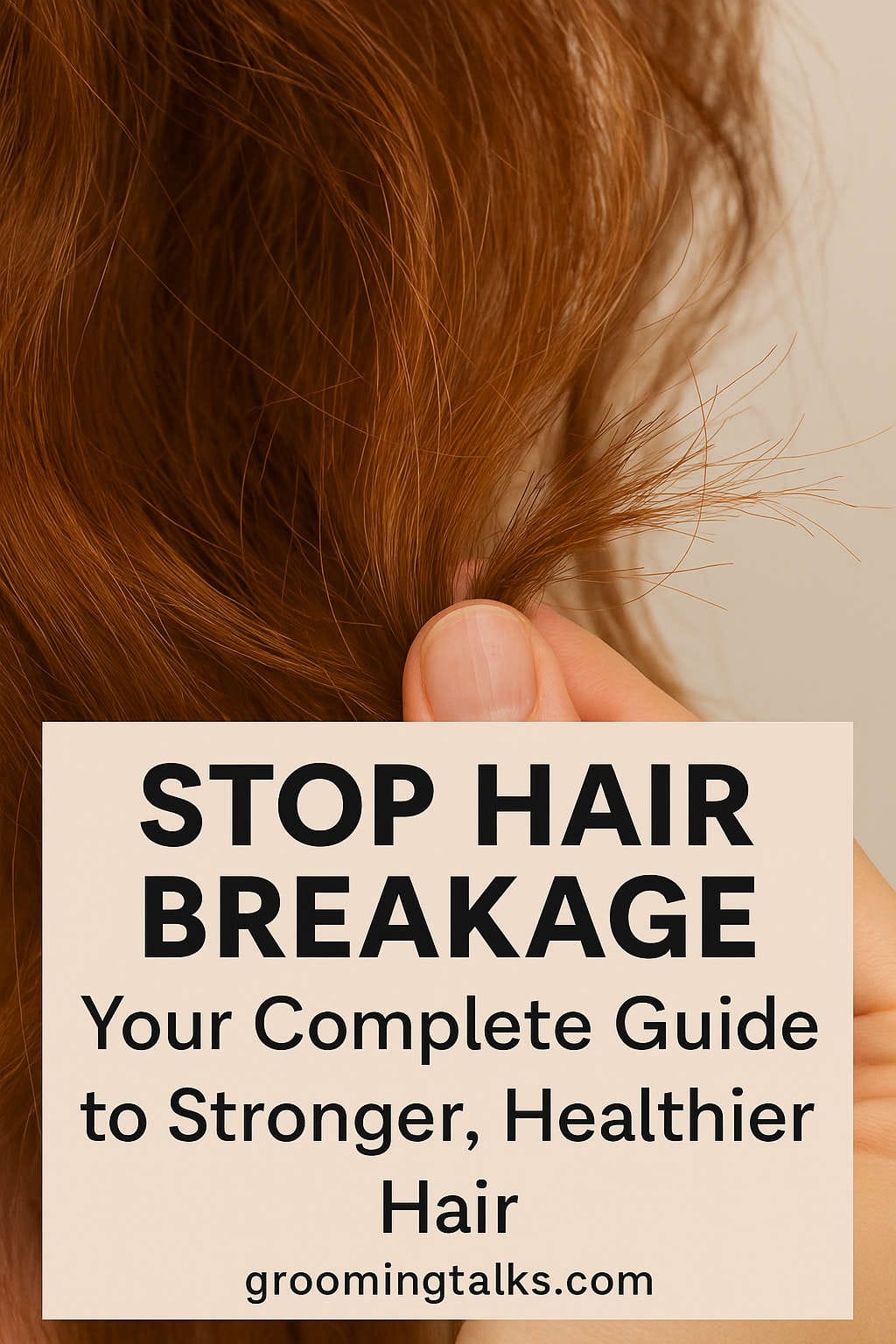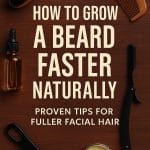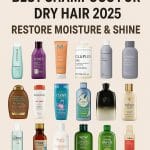Have you ever noticed little pieces of hair on your bathroom counter, your pillowcase, or your clothes? If so, you’re not alone. Hair breakage is a common problem that affects people of all hair types and lengths. It can be disheartening to invest time and money into your hair care routine only to see short, snapped strands everywhere. But here’s the good news: most hair breakage is preventable and reversible with the right knowledge and care.
In this guide, we’ll explore what causes hair to break, how to tell if your hair is actually breaking or just shedding, and most importantly, how to stop breakage and start growing stronger, healthier hair.
What Is Hair Breakage?
Hair breakage happens when the structure of your hair becomes so weak or damaged that the strand snaps. Unlike natural hair shedding—where a strand falls out from the root—breakage can occur anywhere along the hair shaft. This results in uneven ends, frizz, and difficulty retaining length.
Common Signs of Hair Breakage:
- Short, uneven strands throughout your hair
- Excess frizz and flyaways
- Split ends and thinning
- Hair that feels rough or brittle to the touch
- Strands snapping during brushing or styling
Understanding what your hair is going through is the first step toward fixing it.
Hair Breakage vs. Shedding: Know the Difference
It’s important to differentiate between breakage and shedding because they require different solutions.
Shedding:
- Happens from the root
- A white bulb is visible at the end of the hair
- Typically normal to lose 50–100 strands per day
- Can increase due to stress, hormones, or illness
Breakage:
- Occurs mid-shaft or at the ends
- No bulb at the end
- Usually the result of damage or dryness
Pro tip: If you see hair on your pillow or in the shower that’s shorter than the rest and has no bulb, it’s likely breakage.
Top Reasons Why Your Hair Might Be Breaking
Understanding the root causes of breakage can help you address them more effectively. Let’s explore the most common culprits:
1. Overwashing and Harsh Shampoos
Washing your hair too frequently or using shampoos with strong sulfates can strip away your natural oils. These oils protect your hair and keep it hydrated. When they’re gone, your hair becomes dry and prone to breakage.
Solution:
- Switch to a gentle, sulfate-free shampoo.
- Reduce your washing frequency to 1–3 times per week depending on your hair type.
- Use a co-wash (conditioner-only wash) if your hair is curly or dry.
2. Heat Styling Without Protection
Flat irons, curling wands, and blow dryers can reach temperatures that literally fry your hair if you’re not using protection. Repeated use without heat protectant weakens the hair shaft and leads to breakage.
Solution:
- Always apply a heat protectant spray or cream before using any hot tools.
- Use the lowest effective heat setting.
- Limit heat styling to once or twice a week, or less.
- Try heatless styling methods (like braiding or rollers) for a break.
3. Chemical Treatments
Frequent bleaching, dyeing, relaxing, or perming can drastically change the structure of your hair. These processes can leave hair porous, weak, and highly susceptible to breakage.
Solution:
- Space out chemical treatments as much as possible.
- Use bond-building products like Olaplex to strengthen the hair.
- Always deep condition after any chemical process.
- Consult a professional instead of attempting chemical services at home.
4. Lack of Moisture
Dry hair is fragile hair. Without enough moisture, the hair cuticle lifts, and the strand becomes more vulnerable to environmental damage and mechanical stress.
Solution:
- Use a moisturizing shampoo and conditioner.
- Deep condition at least once a week.
- Apply a leave-in conditioner after washing.
- Use the LOC (liquid, oil, cream) or LCO method to lock in moisture.
5. Imbalanced Protein Levels
Hair is primarily made of a protein called keratin. A deficiency in protein can cause hair to become too soft and weak, while too much protein can make it stiff and brittle.
Solution:
- Use protein treatments once every 4–6 weeks if your hair feels mushy or overly elastic.
- Alternate between protein-rich and moisturizing products.
- Avoid overuse of protein-heavy products like keratin shampoos.
6. Rough Detangling and Styling Habits
Brushing too aggressively, styling wet hair tightly, or wearing styles that pull on your strands can cause mechanical breakage.
Solution:
- Detangle hair gently with your fingers or a wide-tooth comb.
- Start detangling from the ends and work your way up.
- Avoid tight hairstyles like high ponytails, tight braids, or buns.
- Use silk or satin scrunchies instead of rubber bands.
7. Nutritional Deficiencies
Your hair needs nutrients just like the rest of your body. Lack of protein, iron, vitamin D, biotin, and other nutrients can weaken your strands from the inside out.
Solution:
- Eat a balanced diet with lean proteins, leafy greens, nuts, seeds, and healthy fats.
- Drink plenty of water throughout the day.
- Consider supplements if you have diagnosed deficiencies.
- Consult with a healthcare provider before starting new supplements.
8. Environmental Stressors
Sun exposure, pollution, wind, and chlorine from pools can all degrade the outer layer of the hair (the cuticle), leading to dryness and breakage.
Solution:
- Wear a hat or scarf when outdoors for extended periods.
- Use a leave-in conditioner with UV protection.
- Rinse hair with clean water before and after swimming.
- Use clarifying shampoo once a month to remove buildup.
How to Tell If Your Hair Is Improving
So you’ve made some changes—but how do you know they’re working?
Signs of Healthier Hair:
- Fewer broken strands in your brush or sink
- Softer, shinier, and more manageable hair
- Improved elasticity (hair stretches and springs back)
- Retaining length over time
- Split ends are less frequent
Be patient. Hair health doesn’t change overnight, but with consistent care, you’ll see progress.
Smart Habits to Prevent Hair Breakage Long-Term
Prevention is always better than cure. Here are key habits that can help you keep breakage at bay for good:
1. Trim Regularly
Get a trim every 8–12 weeks to remove split ends before they travel up the shaft.
2. Sleep Smart
Use a silk or satin pillowcase, or wear a silk/satin bonnet or scarf at night to reduce friction while you sleep.
3. Protective Styling (With Care)
Styles like braids, twists, and buns can protect ends—but only if done properly. Avoid styles that are too tight or left in too long.
4. Clarify Periodically
Use a clarifying shampoo once a month to remove product buildup, which can block moisture from penetrating the hair.
5. Hydrate From the Inside Out
Drink enough water daily. Hydrated hair is less prone to dryness and breakage.
6. Handle Wet Hair With Care
Hair is more fragile when wet. Use a microfiber towel or cotton T-shirt to blot dry, and avoid vigorous rubbing.
Tips Tailored to Your Hair Type
Different textures need different care. Here’s how to protect your hair from breakage based on your hair type:
Straight Hair
- Prone to oiliness and product buildup
- Wash with a gentle shampoo every few days
- Avoid heavy oils and butters that can weigh it down
Wavy Hair
- Needs balanced moisture and definition
- Use lightweight leave-ins and gels
- Avoid overbrushing to reduce frizz
Curly Hair
- Naturally dry and prone to tangling
- Use rich conditioners and deep treatments weekly
- Try finger-detangling to reduce breakage
Coily/Kinky Hair
- Most delicate and fragile texture
- Moisturize often with oils and butters
- Low-manipulation and protective styles help reduce handling
Debunking Common Hair Breakage Myths
Let’s clear up some common misconceptions:
“Trimming your hair makes it grow faster.”
False. Trimming doesn’t affect hair growth, but it does prevent breakage and helps you retain length.
“Oils moisturize your hair.”
Not exactly. Oils seal in existing moisture but don’t hydrate on their own. Always apply them after a water-based moisturizer.
“Protective styles can’t cause damage.”
They can—if done too tightly, left in too long, or installed improperly.
DIY Hair Treatments to Try at Home
Want to give your hair a little extra love? Here are some DIY treatments to boost strength and moisture:
Avocado & Honey Moisture Mask
- 1 ripe avocado
- 2 tablespoons honey
- 2 tablespoons olive oil
Blend until smooth and apply to damp hair. Leave on for 30 minutes and rinse well.
Egg & Yogurt Protein Treatment
- 1 egg
- 2 tablespoons plain yogurt
- 1 tablespoon coconut oil
Mix and apply to hair. Leave on for 20 minutes, then rinse with cool water to avoid cooking the egg.
Aloe Vera & Castor Oil Leave-In
- 2 tablespoons aloe vera gel
- 1 tablespoon castor oil
- Few drops of lavender or rosemary oil
Apply to damp hair before styling to promote softness and growth.
When to Seek Professional Help
If you’ve tried everything and your hair is still breaking excessively, it may be time to consult a:
- Trichologist for scalp and hair issues
- Dermatologist for underlying health or hormonal problems
- Professional stylist for personalized hair care plans
Final Thoughts: You Can Beat Hair Breakage
Hair breakage can be frustrating, but it’s not a life sentence. With patience, consistency, and the right knowledge, you can stop the breakage cycle and grow healthier, stronger hair.
The key is listening to your hair. Give it the moisture, protein, and gentle handling it needs. Focus on progress, not perfection. Celebrate the small wins—fewer broken strands, softer curls, or that extra inch of length.
Remember: healthy hair is not about perfection. It’s about care, consistency, and confidence.
Got tips or questions about hair breakage? Drop them in the comments below—we’d love to hear your hair story. Let’s grow together.
You might also like,
- Top 18 Best Shampoos for Dry Hair 2025: Restore Moisture & Shine
- Top 10 Natural Conditioners to Pair with Argan Oil Shampoo for Healthy Hair
- Best Shampoos for Damaged Hair in 2025 | Restore & Repair with Top Expert Picks






